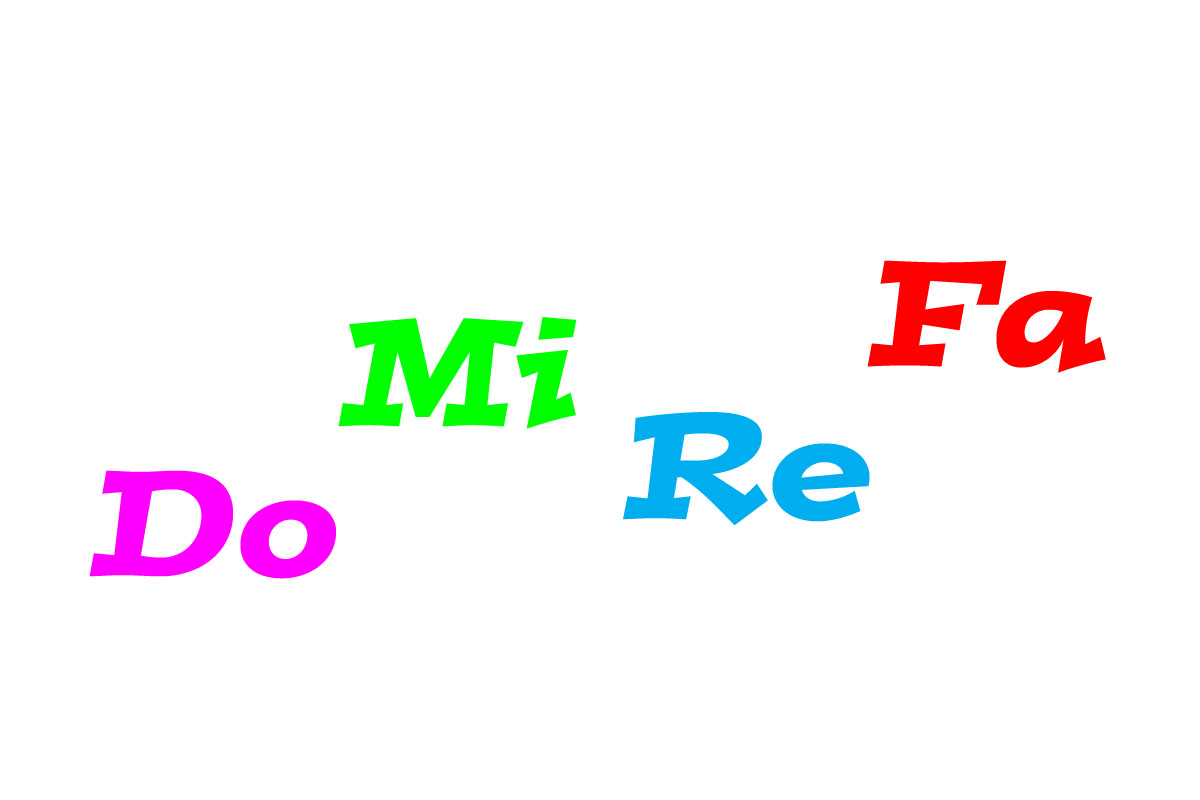Welcome to your first lesson in conceiving and perceiving melody like a real musician…
The String of Intervals Approach
First, consider the commonly-prescribed String-of-Intervals approach, which goes something like this:
- Conceive, perceive, hear, and sing the first note in the melody, then…
- Conceive, perceive, hear, and sing the interval between the first note and second note and figure out what note that is, then…
- Conceive, perceive, hear, and sing the interval between the second note and third note and figure out what note that is, then…
- Conceive, perceive, hear, and sing the interval between the third note and fourth note and figure out what note that is, and so on.
“Happy Birthday” Analyzed using the String of Intervals Approach
Let’s apply the “string of intervals” approach to “Happy Birthday” starting on the note G (M2=major 2nd, m2=minor 2nd, M3=Major 3rd, m3=minor 3rd, P4=Perfect 4th, P5=Perfect 5th, m6=minor 6th, P8=octave)…

The Problem with the String of Intervals Approach
Yikes! Although the “string-of-intervals” approach is mathematically accurate, it suffers from two serious shortcomings:
First, the “string-of-intervals” view is an incomplete conception of melody, because…
- It ignores the critically important concept (and reality) of tonal centers and keys.
- It ignores the fact that the melody occurs in the context of a key center that organizes all the notes harmonically.
- It ignores the fact that each note in the melody has a particular harmonic function in the context of the key center.
- It ignores the fact that not all notes in a melody are of equal importance: some notes are structural, others are embellishments.
- It ignores the fact that each melody note performs a unique function, sometimes creating harmonic tension, sometimes relieving harmonic tension.
- It ignores the fact that it is relatively easy to hear and feel the sound of each note, independently of all the other notes, with respect to the key center.
Second, the incomplete melodic conception fostered by the “string-of-intervals” approach makes melodic perception (hearing) and performance (singing and playing) much more difficult than it needs to be. Because…
- You have to remember the sound of the note you just played.
- You have to remember the symbol for or key on the piano of the note you just played.
- You have to be able to hear the interval between each adjacent note.
- You have to theoretically know the intervals between each adjacent note.
- You have to keep track of where you are at all times; if you miss just one note, you will be hopelessly lost.
- While trying to remember what just happened, you are being distracted from what is happening.
- There are far more possible combinations of intervals between any two notes than there are numbers of notes in a key (twelve maximum).
“Happy Birthday” analyzed using Solfege
Solfege teaches us to conceive (think about), perceive (hear), and perform (sing and play) the melody with the awareness of the unique “sound-feelings” of each note with respect to a tonal center. In other words, Solfege is all about learning to hear a melody harmonically.
Solfege analysis of “Happy Birthday” in the key of C (C=Do)…

The beauty and simplicity of this approach is that, when you are in the key of C, C will always sound/feel like Do, G will always sound/feel like So, A will always sound/feel like La, and so on. And it does not matter which notes come before or after. This is so important that it must be repeated: When you are in the key of C, C will always sound/feel like Do, G will always sound/feel like So, A will always sound/feel like La, and so on.
With a little know-how and the right kind of study-practice, you will learn to recognize all of the sound-feelings instantly in any context without having to remember each note or to keep track of intervals.
Special Note: Naming notes (including Solfege names) is not a necessary performance skill. In fact, the ultimate goal is to abandon the use of names altogether. Names are just a temporary and convenient way to communicate with each other while learning the concepts and training our ears. The ultimate goal is to go straight from music notation to sound (sight singing), from sound to notation (dictation), or from sound to physical execution at the keyboard (playing by ear).
learn more… Scales: A Harmonic View

Leave a Reply